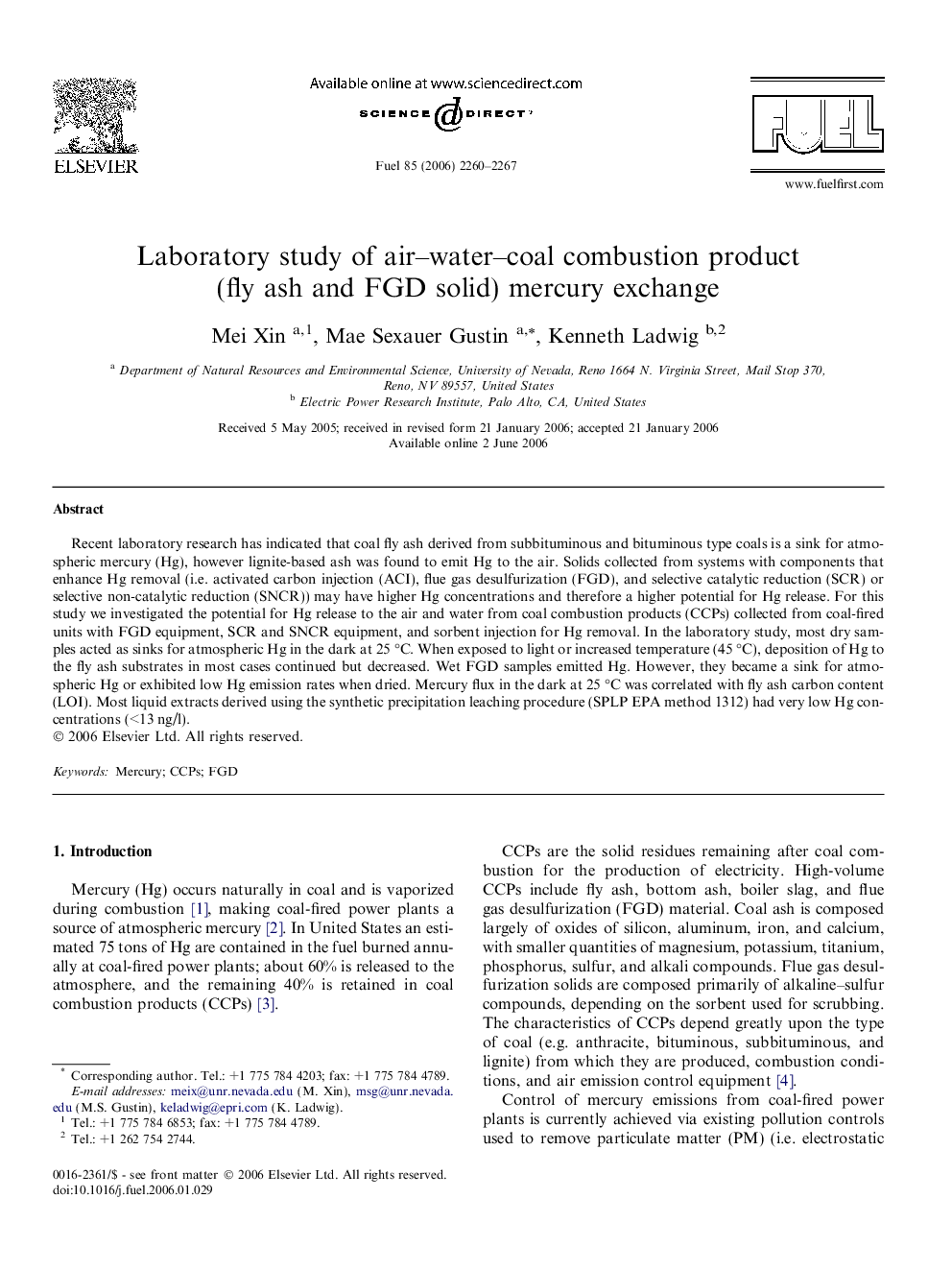| Article ID | Journal | Published Year | Pages | File Type |
|---|---|---|---|---|
| 208452 | Fuel | 2006 | 8 Pages |
Recent laboratory research has indicated that coal fly ash derived from subbituminous and bituminous type coals is a sink for atmospheric mercury (Hg), however lignite-based ash was found to emit Hg to the air. Solids collected from systems with components that enhance Hg removal (i.e. activated carbon injection (ACI), flue gas desulfurization (FGD), and selective catalytic reduction (SCR) or selective non-catalytic reduction (SNCR)) may have higher Hg concentrations and therefore a higher potential for Hg release. For this study we investigated the potential for Hg release to the air and water from coal combustion products (CCPs) collected from coal-fired units with FGD equipment, SCR and SNCR equipment, and sorbent injection for Hg removal. In the laboratory study, most dry samples acted as sinks for atmospheric Hg in the dark at 25 °C. When exposed to light or increased temperature (45 °C), deposition of Hg to the fly ash substrates in most cases continued but decreased. Wet FGD samples emitted Hg. However, they became a sink for atmospheric Hg or exhibited low Hg emission rates when dried. Mercury flux in the dark at 25 °C was correlated with fly ash carbon content (LOI). Most liquid extracts derived using the synthetic precipitation leaching procedure (SPLP EPA method 1312) had very low Hg concentrations (<13 ng/l).
